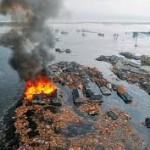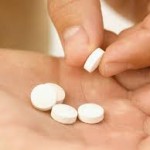In the last blog we showed how we knew from a medical standpoint that there was substantially more early radioactive contamination from the reactor in Japan than reported. As the story unfolds this has been confirmed. Today we will address the dangers of nuclear fall-out from this reactor, and how far it will likely contaminate the area.
The lesson learned from the Chernobyl accident in Russia: There has been a United Nations panel that has collected over twenty years worth of data from the accident and the fallout. The largest increase in cancers was thyroid cancer, with 4000 cases found in children and adolescents. Thankfully thyroid cancer is quite treatable and survivable – about 92% at 30 years. There have been a number of reports about cancer, health, and the effects of Chernobyl, but many of those reports come from non-peer reviewed sources, and from sources that have an agenda (either pro-nuclear or anti-nuclear).
 The airborne contamination is dispersed quickly- so it is not a danger to the continental United States, Alaska, or Hawaii. It is a danger to the members of the armed forces in the US Navy vessels in the area. It is also a danger to the people who are going there to help the people of Japan.
The airborne contamination is dispersed quickly- so it is not a danger to the continental United States, Alaska, or Hawaii. It is a danger to the members of the armed forces in the US Navy vessels in the area. It is also a danger to the people who are going there to help the people of Japan.
The radioactive iodine, if ingested, will accumulate in the thyroid gland – and radiation given off quickly will destroy part of the thyroid and can cause mutation in the cells of the thyroid leading to thyroid cancer. Radioactive iodine has a half life of 8 days, and people in the zone of contamination can be given non-radioactive iodine that will compete with the radioactive iodine and greatly reduce the risk of thyroid cancer.
The long term issues will be from the other radioactive substances that enter the food chain and are ultimately consumed by humans. For these substances (Strontium, Cesium) we have no equivalent protective agent like we do with iodine – yet, if the accident at Chernobyl taught us anything- it is that the impact will be minimal.
However, Russia is a large country where populations can be moved and contaminated areas evacuated. Japan is a smaller country, and while people can be displaced for a brief period of time, they cannot be displaced for long. In Chernobyl they did not have containment for the reactors but in Japan the reactors are not the problem.
The problem in Japan is the “spent” fuel rods. Those rods are not fully spent. They are still highly radioactive, and still emit a lot of heat. So they are placed into water that circulates, to keep them cool in their Zirconium covers. In Japan many of that cooling water has been lost, and these fuel rods have broken down the Zirconium and their radioactive material is finding its way into the environment. So, while all the news reports focus on the reactors- which are contained – the real issue is the used fuel rods.
The radioactive iodine is treatable, survivable, and thyroid cancer is quite treatable. However, the increase in leukemia and potential for bone cancer has worse prognosis.
 The questions being asked by some are – should we, in the West, take iodine? The answer is NO. While we can detect minute amounts of radioactive iodine in the air in a few days- it will be at levels far below those that might cause problem. In addition, iodine itself has side effects (nausea, diarrhea, thyroid shut down, and potassium overload).
The questions being asked by some are – should we, in the West, take iodine? The answer is NO. While we can detect minute amounts of radioactive iodine in the air in a few days- it will be at levels far below those that might cause problem. In addition, iodine itself has side effects (nausea, diarrhea, thyroid shut down, and potassium overload).
While no one is allergic to elemental iodine, iodine can complex with some proteins and cause allergic type reactions. Taking iodine for a prolonged period of time might be dangerous.
When one thinks of being prepared for a disaster – first on the list should be plenty of drinking water, duct tape, canned food – and first aid supplies. Having iodine isn’t a bad idea – but is probably 35th on the list of essentials to have in case of a disaster. Consider the storms, power outages, earthquakes, and other disasters are far more likely.
Again- if I heard clouds were coming my way, I might simply use more iodized salt than Kosher salt in my cooking, just in case.
